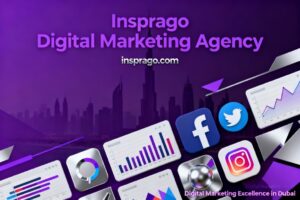In today’s highly competitive digital landscape, attracting clicks is only the first step. What truly drives results is what happens after a user clicks your ad. That’s where SEM Landing Pages come into play.
These purpose-built pages aren’t just visually appealing—they are designed to turn interest into action. Moreover, with rising ad costs, every visitor interaction must count. If your landing page isn’t optimized for performance, your ROI can quickly suffer.
In this blog, we’ll explore what makes high-converting SEM Landing Pages effective, how to design them, and why optimization is an ongoing necessity.
What Are SEM Landing Pages and Why They’re Unique
To begin with, SEM Landing Pages are standalone pages designed specifically for search engine marketing campaigns. Unlike regular website pages, they focus on one goal—whether it’s capturing leads, selling a product, or prompting sign-ups.
Here’s what sets them apart:
-
They closely mirror your ad copy, ensuring message consistency.
-
They remove distractions like headers, footers, or unrelated links.
-
They guide visitors toward a single, clear action.
Therefore, if your goal is to convert paid traffic effectively, investing in custom SEM Landing Pages is essential.
Core Elements of High-Converting SEM Pages
High-converting landing pages combine psychology, design, and usability. Let’s examine the foundational components that make them successful.
1. Clear and Relevant Headline
First impressions are critical. Your headline must instantly tell visitors they’ve arrived at the right place. Use powerful, benefit-driven language aligned with your ad copy.
2. Persuasive Subheadings
Next, subheadings provide context and make your page scannable. Visitors often skim, so ensure the message is clear and compelling.
3. Trust-Building Elements
Adding trust signals like reviews, certifications, or case studies increases credibility. These elements reassure visitors that they are making a safe choice.
4. Action-Focused CTA
CTA buttons must stand out. Use active, urgent phrases like “Get My Free Trial” or “Download Now” to prompt immediate action.
5. Mobile Responsiveness
Finally, mobile-first design is essential. With most users visiting landing pages via smartphones, a fast-loading, intuitive layout is non-negotiable.
Why User Intent Matters
Understanding user intent is crucial. No matter how well-designed your page is, if it doesn’t align with the user’s expectations, it won’t convert.
To optimize for intent:
-
Match keyword intent with the ad language.
-
Fulfill expectations immediately in your headline.
-
Solve the visitor’s problem with benefit-driven bullet points.
Aligning your SEM Landing Pages with ad messaging is the fastest path to higher conversions.
Common Mistakes That Kill Conversions
Even experienced marketers can make costly mistakes. Avoid these pitfalls:
-
Overloading the page with information.
-
Weak or vague CTA buttons.
-
Skipping A/B testing.
-
Cluttered layouts that distract from the main action.
Addressing these issues early can dramatically improve page performance.
Best Practices for Design and Usability
Design is more than aesthetics—it affects user perception and behavior. To maximize usability:
-
Use directional cues like arrows pointing to the CTA.
-
Highlight key information above the fold.
-
Maintain visual consistency with cohesive fonts and color schemes.
-
Use bullet points for easy scanning.
A clear visual hierarchy guides visitors’ attention and encourages action.
Optimizing Content with Persuasive Copywriting
Compelling copy can boost conversions as much as great design. Keep your writing clear, benefit-focused, and action-oriented.
Tips for effective landing page copy:
-
Speak your audience’s language and mirror how they search.
-
Focus on benefits, not just features.
-
Create urgency with phrases like “Limited Time” or “Ends Soon.”
-
Eliminate jargon and fluff. Every word should push visitors toward the CTA.
Examples of High-Performing SEM Landing Pages
For instance, promoting an AI-powered budgeting app could look like this:
-
Headline: “Smarter Budgeting in 5 Minutes a Day.”
-
Three quick bullet points highlighting key features.
-
Short testimonial video for social proof.
-
Large, centered CTA button: “Start My Free Trial.”
This approach works because it’s focused, benefit-oriented, and easy to navigate.
Tracking, Testing, and Continuous Improvement
Launching a landing page is just the beginning. High-performing SEM Landing Pages require ongoing measurement and iteration.
Key metrics to track:
-
Click-through rate (CTR) to evaluate ad effectiveness.
-
Bounce rate to see if visitors engage with the page.
-
Conversion rate to measure success of the CTA.
A/B testing different headlines, images, or CTAs can yield incremental yet significant improvements over time.
Why Iteration Is Critical for Long-Term Success
Landing pages are not one-time projects. Consumer behavior, trends, and offers evolve, so pages must adapt.
Best practices include:
-
Monthly performance reviews.
-
Quarterly testing of headlines, visuals, and CTAs.
-
Collecting direct user feedback when possible.
Consistent iteration ensures SEM Landing Pages remain relevant and high-performing.
Conclusion
In summary, building effective SEM Landing Pages is both an art and a science. They require the right mix of design, messaging, user psychology, and performance tracking. Without these, even the most creative ad campaigns may fall short.
When executed correctly, high-conversion pages transform ad spend into leads, sales, or subscribers. If you want to take your campaigns to the next level, partnering with a skilled digital marketing agency can help deliver tangible results through expertly designed pages, A/B testing, and ongoing optimization.
FAQs
Q1: What makes a landing page different from a website homepage?
A1: A landing page is focused on a single goal and removes distractions, unlike a homepage which serves multiple purposes.
Q2: How often should I test my SEM Landing Pages?
A2: Conduct A/B tests regularly and review performance at least monthly to optimize conversions.
Q3: Can small businesses benefit from SEM Landing Pages?
A3: Yes, even small businesses can achieve significant ROI by targeting the right audience with focused landing pages.



















